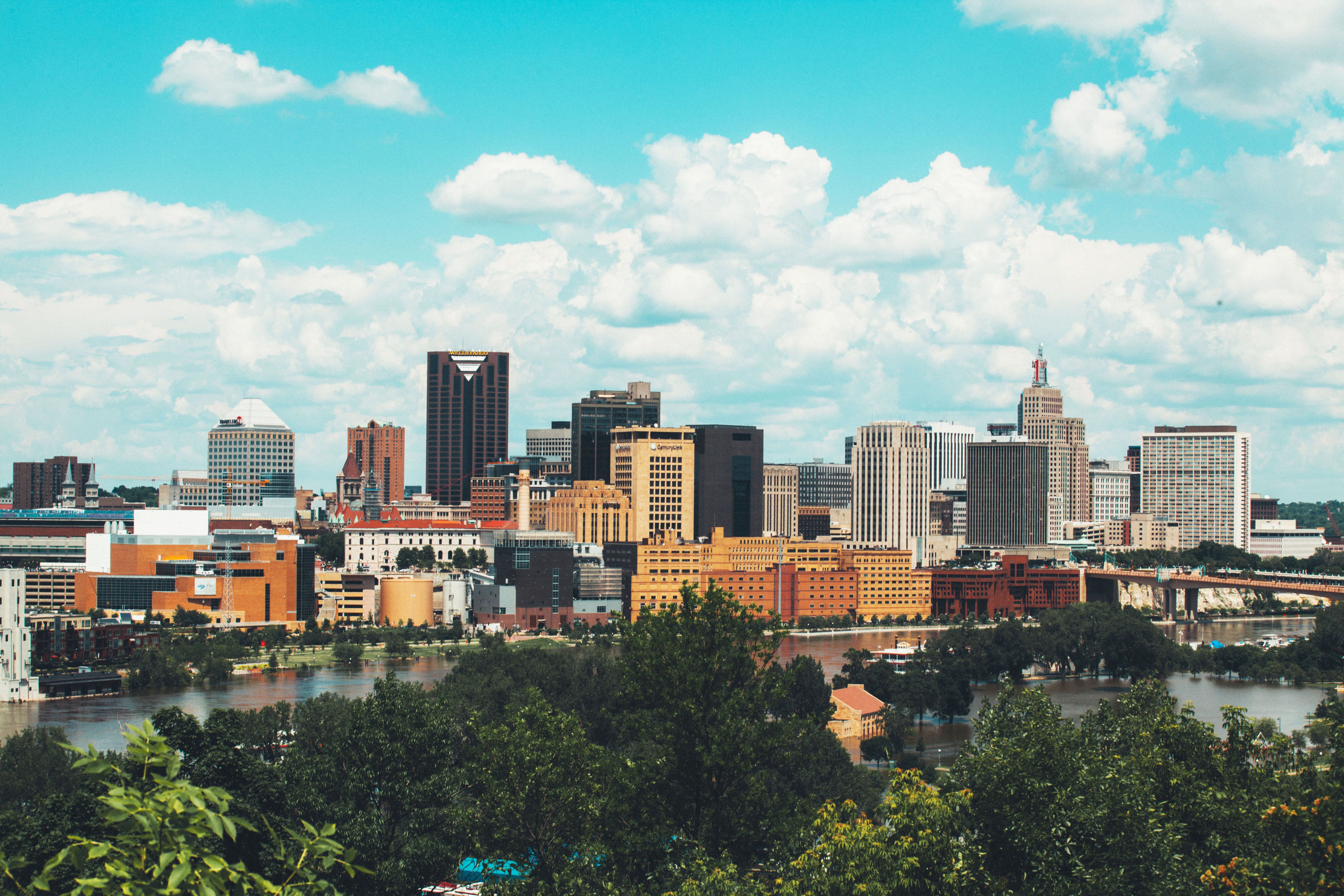Vol. 6 No. 20 (This column published in print in the Minnesota Spokesman-Recorder on 9/12/2019)
Imagine if St. Louis and Detroit counted progress in some other way than the number of vacant buildings demolished and number of downtown jobs added this year.
- Michael R. Allen
And in every afflicted city, the story is the same: luxury condos, mass evictions, hipster invasions, a plague of tourists, the death of small local businesses, and the rise of corporate monoculture.
- Jeremiah Moss
As a native of the Mississippi River town of Alton, Illinois (birthplace of Miles Davis), I remember the City of St. Louis as being essentially a stone’s throw away from my childhood home. In effect, for all intents and purposes, St. Louis was home. Which is why I took particular interest in a recent article from CityLab, titled “Downtown St Louis is rising as black St. Louis is being razed.” Written by architect, preservationist, and Washington University lecturer, Michael R. Allen, this piece highlights current efforts to revitalize the city’s central core.
A big part of this endeavor has been entrusted to the privately funded St. Louis Blight Authority, established by Twitter co-founder Jack Dorsey and fellow billionaire investor Bill Pulte. Similar efforts have been well underway in Detroit (where Pulte also created the Detroit Blight Authority). But as Allen points out these plans, while “increasing the value of central city neighborhoods,” will significantly “demolish and depreciate” much of St. Louis’ north side where more than 100,000 people reside. This includes the city’s historic African American zip codes where the likes of Chuck Berry, Maya Angelou, Robert Guillaume, Arthur Ashe, and Angela Winbush all called home.
Of course, this type of thing is hardly new.
In the early six years that this column has existed, we’ve covered considerable ground on the subjects of gentrification, eminent domain, racial covenants, neglect (benign or otherwise), and additional policies and practices that have decimated prominent African American neighborhoods under the strategic banner of progress.
Among these places was the community of Quindaro, Kansas, founded in 1856 by abolitionists (as a link to the Underground Railroad) and settled by African Americans through the remainder of the nineteenth century. Among a myriad of achievements, Quindaro boasted the first Black college west of the Mississippi River, the Quindaro Freedman’s School (later known as Western University). Today, the area is simply known as the Quindaro Ruins.
We’ve also touched on the historic Albina district of Portland, Oregon, which was established in 1873. By the 1960’s, African Americans made up more than 80 percent of Albina’s population. In 2019, Black residents now account for less than a quarter of the area’s inhabitants.
Meanwhile, no one here in the Twin Cities should have to be reminded of St. Paul’s legendary Rondo neighborhood, which was sacrificed as part of the Federal-Aid Highway Act of 1956, making way for the construction of Interstate 94. Approximately 85 percent of the city’s African American community lived here before they were literally forced from their homes in the name of “economic development.” But, for whom?
Recently, there have been waves of gentrification in cities such as San Francisco, Seattle, Denver, Atlanta, Philadelphia, and Washington, D.C. Even New York, Chicago, and Los Angeles are experiencing this massive trend. A 2015 report from the publication Governing, identified Minneapolis as one of America’s fastest gentrifying cities (where roughly 51 percent of “eligible census tracts” are in the process of becoming gentrified). And, who among us doesn’t wonder what St. Paul’s Hamline-Midway district will look like 5, 10, even 20 years from now in the wake of light rail expansion, a professional soccer stadium, and scores of additional development projects.
The St. Paul Convention and Visitors Bureau cheerfully advertises how the green line connects “vibrant, diverse neighborhoods filled with historic landmarks, cultural institutions, public art, mom and pop shops, and some of the city’s best ethnic restaurants.”
Sure, but how many of these places will be around in 2040? Perhaps, many of them will be here. But history tells us that is not a given, nor particularly likely.
Don’t get me wrong. I’m all in favor of progress and economic development. It’s been my professional calling for nearly 40 years. But again, we must ask the question, “Progress for whom? And, at who’s expense?”
Lest we forget that we consistently rank at or near the top of America’s metropolitan areas relative to quality of life indicators like education, healthcare, employment, housing, and so on. And yet, Minneapolis and St. Paul continue to suffer from rampant racial disparities including some of the biggest Black/White gaps in the nation.
We’ve been told that gentrification in Twin Cities will be different than it has been in other locales. Yet again, time after time communities around the country witness newcomers – first the developers and then the new residents that follow – reshape the area oftentimes pricing them right out the neighborhoods they’ve called home for generations. I guess time will tell.
However, I’m really discouraged (though thoroughly unsurprised) by what Allen says about the evolving situation in St. Louis. He writes:
The city (St. Louis) has no vision for its future beyond a tired cocktail of market fundamentalism and crisis governance incapable of delivering much good to most of its working residents, and in fact, it denies them opportunities to increase wealth or quality of life. Imagine if the city had secured a fund from Dorsey and Pulte to create micro-grants for small business startups – or home repair dollars – in the same north city neighborhood.
Yeah, just imagine that. Be it in St. Louis or St. Paul, Portland or Philadelphia, Detroit or Denver, Milwaukee or Minneapolis. Or for that matter, anywhere else.
Clarence Hightower is the Executive Director of Community Action Partnership of Ramsey & Washington Counties. Dr. Hightower holds a Ph.D. in urban higher education from Jackson State University. He welcomes reader responses to 450 Syndicate Street North, St. Paul, MN 55104.









